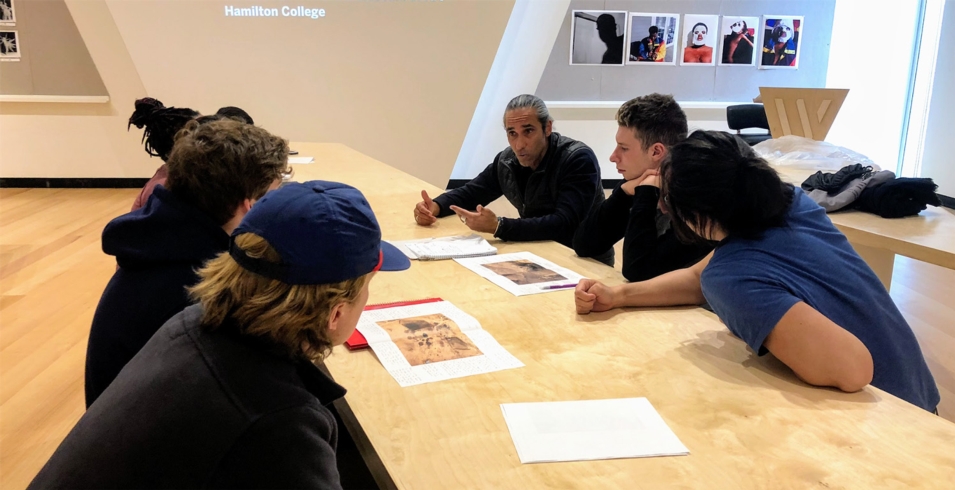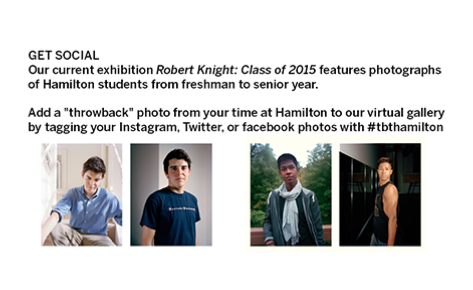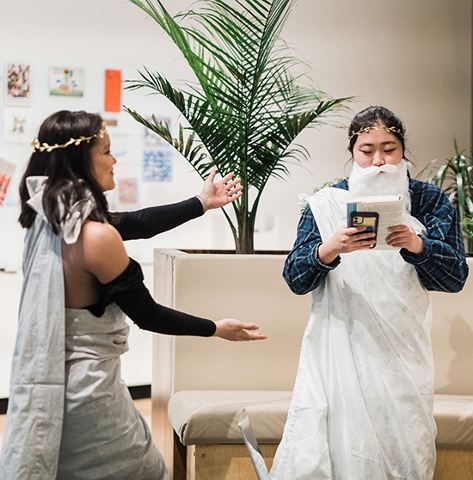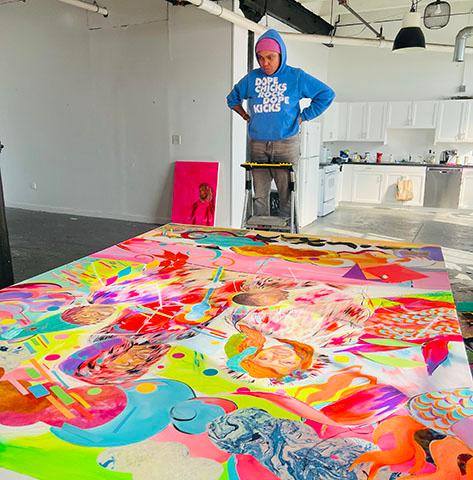Janelle Rodriguez
For the past two years, I have served as the Faculty Liaison to the Wellin as part of a grant from the Teagle Foundation. The goal of the grant is to help "develop and disseminate best practices in teaching and learning with museum exhibitions through a process of collaborative pedagogical innovation." My primary responsibility as liaison has been to recruit and encourage Hamilton faculty to engage with Wellin exhibitions in their teaching.
In spring 2017, eight faculty from disciplines in the humanities, arts and sciences taught nine courses serving 149 students engaged with the exhibition Julia Jacquette: Unrequited and Acts of Play. Faculty developed assignments that were intended to further their course learning goals as a whole and that involved active student work in the exhibition during at least one class visit. Innovative approaches included a Physics course that used the exhibition as the basis for four different assignments connecting Jacquette’s work with scientific phenomena including waves and interference patterns; geometric tiling patterns and their relationship to crystals; pouncing as optic tracing technique; and a field trip to Golden Artist Colors’ factory to understand the physical and chemical properties of paint.
In fall 2017, five faculty taught eight classes with 96 students utilizing the exhibition Innovative Approaches, Honored Traditions. A particularly innovative approach to working with the exhibition was developed by Visiting Assistant Professor Nhora Serrano in her Literature course, “Early Storytellers in World Literature,” which utilized the exhibition as a platform to transform students into storytellers. After studying how literary characters tell stories and the notion of ekphrasis in relation to art objects, students were asked to work in pairs to create short museum labels about a particular work in the exhibition. Students needed to balance description of the object with context and insight that would help encourage viewers to engage with the text, without repeating information that was already available in the museum.
The Teagle grant culminated this spring with the exhibition This Place, which was shared by Hamilton with Colgate, Skidmore and UAlbany. At Hamilton, fourteen faculty taught 21 classes with 330 students engaged with the exhibition, including courses in Arabic, Art, Art History, French, Geoscience, Hispanic Studies, History, Literature, Psychology, Religious Studies, and Sociology. Students and faculty benefited from campus visits by This Place organizer and artist Frederic Brenner, as well as visits by artists Wendy Ewald and Fazal Sheikh.
The Teagle grant has served as a tremendous springboard for faculty engagement with the Wellin during the past two years, and will hopefully lead to continued participation in future exhibitions and the institution of a long-term culture of faculty engagement with the Wellin.










